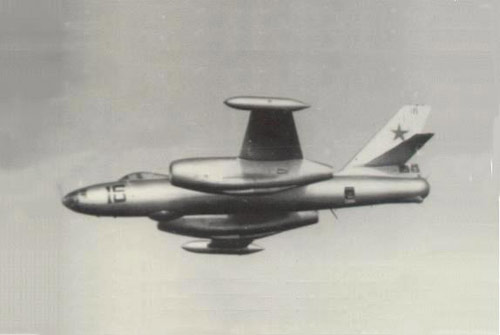Il-28 Beagle
Summary
| Category | Bombers |
| Origin country | 🇨🇳 Ex-USSR |
| Manufacturer | Ilyushin |
| First flight | 8 June 1948 |
| Year introduced | 1950 |
| Number produced | 6635 units |
| Average unit price | $2 million |
Description
In late 1947, the Ilyushin Design Bureau initiated the development of a new jet-powered tactical bomber. This project was spurred by a requirement for an aircraft capable of carrying a 3,000 kg bombload at 800 km/h. The design was made possible by Great Britain's sale of Rolls-Royce Nene jet engines to the Soviet Union, enabling Soviet engineers to produce the RD-45, an unlicensed copy of the Nene. The Il-28 was designed around two RD-45 engines. The first prototype, powered by two imported Nenes, made its maiden flight on 8 July 1948. Testing proved successful, with the aircraft demonstrating good handling and a top speed of 833 km/h. A second prototype, featuring Soviet-built RD-45 engines, followed on 30 December 1948. Following state tests, large-scale production was ordered on 14 May 1949, and the first pre-production aircraft with improved Klimov VK-1 engines flew on 8 August 1949, entering full production in September 1949 and service in early 1950.
The Il-28 features a conventional layout, characterized by high, unswept wings, and a swept horizontal tail and fin. Two engines are housed in nacelles directly beneath the wings. The nosewheel retracts rearwards, while the mainwheels retract forwards into the engine nacelles. The crew of three occupy separate, pressurized compartments. The navigator, doubling as bombardier, is located in the glazed nose, equipped with an OPB-5 bombsight. The pilot sits under a sideways-opening bubble canopy with an armored windscreen, while the gunner is in a separate compartment at the rear, operating a power-driven turret with two Nudelman-Suranov NS-23 23 mm cannons, holding 250 rounds each. The pilot and navigator have ejector seats, but the gunner exits via a floor hatch. There are two fixed, forward-firing 23 mm cannons, with 100 rounds each, under the nose, controlled by the pilot. An unusual design element involves splitting the wings and tail horizontally and the fuselage vertically at the centreline, to allow the individual construction of parts which would then be bolted together.
The Il-28 could carry up to 3,000 kg (6,600 lb) of bombs in an internal bay, though a more typical load was around 1,000 kg (2,200 lb). For defensive purposes, the aircraft was equipped with a power-driven tail turret mounting two Nudelman-Suranov NS-23 23 mm cannons, each provided with 250 rounds; this turret was sometimes removed in service to save weight. Furthermore, the Il-28 possessed two fixed, forward-firing 23 mm cannons, also of the NS-23 type, each with 100 rounds, located under the nose and controlled by the pilot. The torpedo bomber version, Il-28T, could accommodate two small or one large torpedo, including RAT-52 rocket propelled torpedoes, in a lengthened weapons bay. Some Il-28s were also converted to Il-28Sh ground attack variants, fitted with 12 underwing pylons for rocket pods, though this conversion saw only limited service.
The Il-28 saw extensive service across the globe, equipping the air forces of approximately 20 nations, including Warsaw Pact members, Middle-Eastern, and African countries. Egypt was among the early adopters, and their Il-28s were prioritized targets during the Suez Crisis as well as later conflicts in the Six-Day and Yom Kippur Wars. Egyptian Il-28s were also deployed in the North Yemen Civil War starting in 1963. The Soviet Union initiated plans for local assembly in Cuba, which were disrupted by the Cuban Missile Crisis, leading to their withdrawal. Limited operations were also conducted in Vietnam and by Afghan forces in Afghanistan, while four ex-Egyptian and two ex-Soviet Il-28s were flown by Egyptian crews for the Nigerian Air Force during the Biafra Wars; Finland also operated four examples for target-towing from 1961 into the 1980s. By the late 1950s, the Soviet Union began relegating the Il-28 to secondary roles, with the supersonic Yak-28 assuming its low-level attack mission in the early 1960s, but some Il-28 variants remained in service until the 1980s and Soviet-built examples continued flying in Egypt into the 1990s.
Main Variants:
-
Il-28: This was the basic three-seat bomber version, powered by two VK-1 engines, serving as the foundation for subsequent variants.
-
Il-28U: An unarmed training version was developed with a new nose housing a cockpit for the instructor, while the trainee occupied the standard cockpit.
-
Il-28R: This three-seat tactical photo reconnaissance version featured extra fuel in the bomb bay and tip-tanks, along with the removal of one forward-firing cannon to accommodate the changes.
-
Il-28T: A torpedo bomber version designed for the Soviet Naval Aviation could carry two small or one large torpedo, including RAT-52 rocket-propelled torpedoes, in a lengthened weapons bay.
-
H-5: This Chinese variant was a standard three-seat tactical bomber, featuring a redesigned wing structure and a tail turret based on the Tupolev Tu-16.
Technical specifications
| Version: Il-28 Beagle | |
|---|---|
| Crew | 1 pilot + 1 navigator + 1 gunner |
| Operational range | 2,180 km (1,355 mi) |
| Maximum speed | 900 km/h (559 mph) |
| Wing area | 60.8 m² (654.4 sqft) |
| Wingspan | 21.5 m (70.4 ft) |
| Height | 6.7 m (22.0 ft) |
| Length | 17.7 m (57.9 ft) |
| Service ceiling | 12,300 m (40,354 ft) |
| Empty weight | 11,890 kg (26,213 lbs) |
| Max. takeoff weight | 21,000 kg (46,297 lbs) |
| Climb rate | 15.0 m/s (49.2 ft/s) |
| Powerplant | 2 x turbojets Klimov VK-1 delivering 2700 kgf each |
| Ejection seat | Severin KS-1 |
Current operating countries
| Country | Units | ||
|---|---|---|---|

|
North Korea | 80 | |
All operators
Armament
Bombs payload:
- Nuclear Izdelyie 407N
- Low-Drag JSC NPO Basalt FAB-500
- Nuclear KB-11 RDS-4 Tatyana

